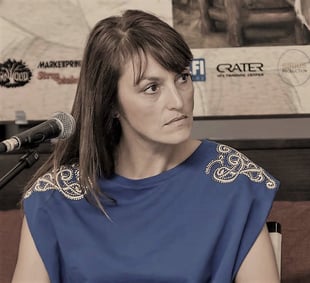

ANIMAFEST PRO | ANIMAFEST SCANNER VI | SIMPOZIJ O SUVREMENOJ ANIMACIJI | ANIMAFEST SCANNER VI - PANEL 2: ANIMACIJA I LIKOVNE UMJETNOSTI
Animirana trilogija o Faustu Georgea Schwizgebela - Andrijana Ružić
Georges Schwizgebel (1944, Reconvilier, Switzerland) is an independent director of eighteen stylistically homogenous short animated films. During his 40-year-long career, he has been animating exclusively in the traditional 2D technique and has been honoured by numerous international film festivals. Schwizgebel’s first film, The Flight of Icarus (1974), was made in gouache technique on cel. The film is described as “a pointillist musical illustration” on Francois Couperin’s baroque music. In 2017 he presented his latest achievement, The Battle of San Romano, executed in acrylic on cel, defining it as “a movement within one painting by Paolo Uccello”.
In the context of contemporary animation, painted cels have become sheer anachronism. Nevertheless, Schwizgebel proceeds against the mainstream and his films are everything but anachronistic. They are hypnotizing and flamboyant; they celebrate the art of animation in a particular synergetic and kinetic synthesis of literature, classical music and painting. What are the reasons for their timelessness? Do they have something to do with the painterly technique, with absence of cuts, with subject-matters, with score, or simply with an overall handmade quality of his films? The most admired works of Edward Hopper, Albert Marquet, Henri Matisse, Pierre Bonnard, John Constable, Giorgio de Chirico come to life in Schwizgebel’s films: they move and breathe, they morph into each other following the rhythm of his drawings and musical notes.
In my presentation I intend to analyse three of Schwizgebel’s films: Le sujet du tableau (1989), La course ŕ l’abîme (1992) and L’homme sans ombre (2004) made in different painting techniques and with the narrative that unites them: the legend of Faust. The purpose of my presentation is to unveil the specific creative act of Schwizgebel: his working method, his formal choices intertwined with music and literature and finally the influence of visual aspects of his films on a few young European independent animators.
Andrijana Ružić (Belgrade, 1972) graduated in History and Criticism of Art at the Università degli Studi in Milan, Italy where she fell in love with the medium of animation. She specialized in history of animated film under Giannalberto Bendazzi: the subject of her master’s thesis was the work of John and Faith Hubley. In the last six years she has been collaborating with the International Comics Festival in Belgrade where she is a curator of a section dedicated to animated film, lecturing and screening the films of a single independent author. She loves to mingle with the authors of animated films during animation festivals and is constantly inspired by their perseverance, dedication, modesty and stunning works of art. Andrijana is based in Milan, Italy and is about to have her first book published.


